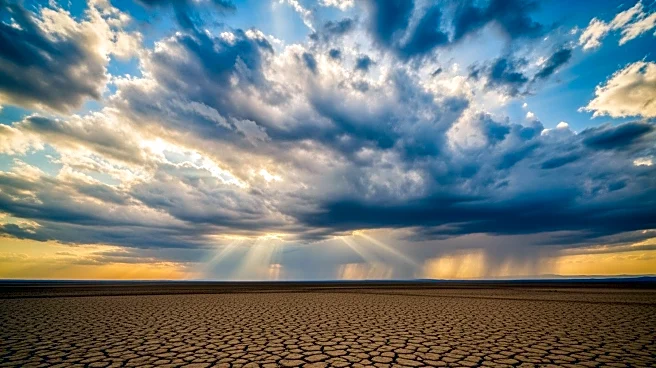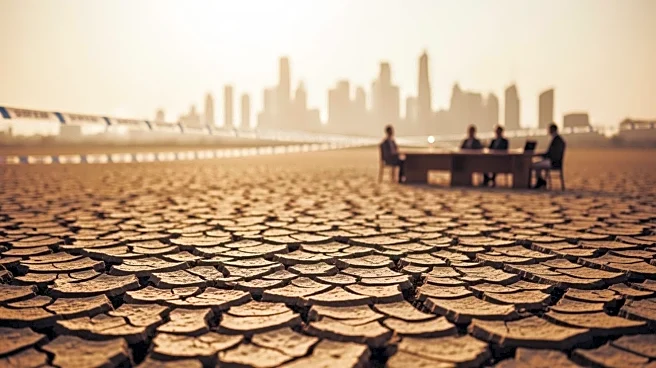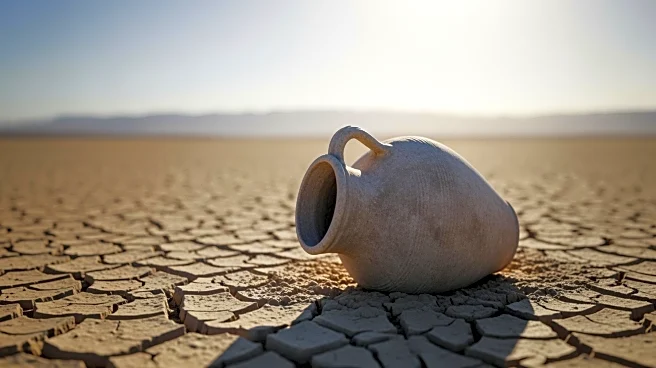What's Happening?
Iran is experiencing one of its most severe droughts in decades, prompting authorities to accelerate cloud-seeding operations and implement water rationing in Tehran and other major cities. The National
Weather Forecasting Center reports that nationwide rainfall has fallen approximately 89 percent below long-term averages, marking the driest autumn in 50 years. The drought has led to significant water shortages, straining infrastructure, agriculture, and major population centers. Tehran, home to over 15 million people, faces severe water cuts, placing households, industries, and essential services under pressure. The government has conducted its first cloud-seeding flight of the current water year over the Urmia Lake basin, with further operations planned for East and West Azerbaijan provinces.
Why It's Important?
Iran's water shortages are reaching historic levels, threatening food production, job stability, public health, and internal cohesion. The crisis could reshape economic planning, domestic priorities, and Iran's broader position in a volatile region. As shortages worsen, they could lead to significant political and social unrest, adding pressure on the government to implement urgent reforms. The dramatic decline of Lake Urmia, once the Middle East's largest saltwater lake, symbolizes Iran's long-term water challenges and the growing strain on the country's natural resources. Without major reforms to water management and consumption systems, Iran risks a prolonged crisis with sweeping domestic and regional consequences.
What's Next?
Authorities plan rolling water cuts in Tehran and are reviewing similar measures in other major cities like Isfahan, Tabriz, and Mashhad. Conservation campaigns are underway to slow consumption and prioritize essential services. Lawmakers and local leaders are pressing the government for urgent action, while public frustration over water shortages adds mounting political pressure on Tehran's administration. Meteorologists are monitoring weather systems for suitable clouds to conduct further cloud-seeding operations, aiming to mitigate the drought's impact.
Beyond the Headlines
The drought crisis in Iran highlights the ethical and environmental challenges of water management in regions prone to climate extremes. The reliance on cloud-seeding as a temporary solution underscores the need for sustainable water management practices and infrastructure improvements. The situation also raises questions about the long-term viability of large urban centers in arid regions and the potential for increased migration and social unrest as resources become scarcer.











